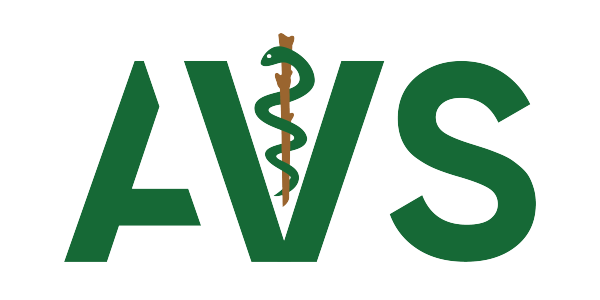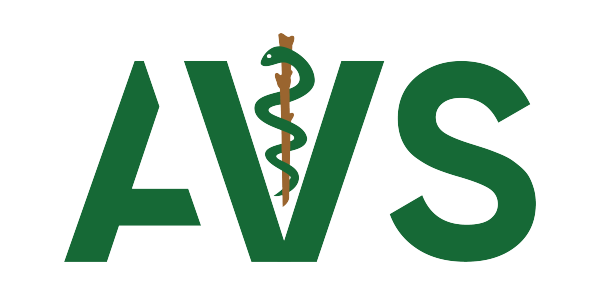Veterinary Orthopedic Manipulation VOM

What is VOM?
Veterinary Orthopedic Manipulation (VOM) is a healing technology that locates areas of the animal’s nervous system that have fallen out of communication, and re-establishes neuronal communication, and thus induces healing. VOM is the most uncomplicated, effective, and safe healing modality in veterinary care to date.
Is Veterinary Orthopedic Manipulation Chiropractic Care?
No. VOM exists in between veterinary medicine and
chiropractic care. It has similarities to some of the
chiropractic modalities and works to restore function by
reducing “subluxations” which occurs with chiropractic care.
VOM Technology uses a hand-held device that is also used in
a popular human chiropractic technique called “Activator Methods”, but it is not to be confused with that technique. The differences between VOM and chiropractic care are significant and distinct.
VOM exists in a gray area between both professions (Veterinary and Chiropractic) and benefits from the positive aspects of both, a hybrid, and thus more effective than either by themselves.
Why is VOM So Accurate?
Because VOM finds and reduces all neuronal subluxations. All neuronal subluxations have a producible pathological reflex associated with them. A pathological reflex is like a knee jerk response. It is either there or it is not. It is an objective means to
determine the presence and reduction of neuronal subluxations. The pathological read is not “partially”, “kind of”, or “almost” there, adding a factor of subjectivity to interpretation.
Are there differences between Chiropractic “Listings” vs VOM “Pathological Reads”?
All chiropractic techniques (veterinary and human) rely on the chiropractic “listing” to determine the presence of a subluxation.
Through manual palpation, a misplaced bone prominence or a taught and tender muscle may be discovered by a competent veterinary chiropractor whose patient is cooperative and relaxed. This is a listing, an anatomical subluxation sign, and almost always is indicative of a neuronal subluxation syndrome.
Unfortunately, only 40% of all neuronal subluxations produce palpable anatomical subluxation signs. This means that over half of all the animal’s subluxations will be overlooked if anatomical listings are used as a means to discover them.
The good news is that all neuronal subluxations produce “pathological reads”, and all these reads are
obvious and easy to discover and reduce.
The goal of an adjustment in a patient is reducing all of their vertebral subluxations. Subluxation reduction based on anatomical listings (a chiropractic adjustment) will only get approximately half of the total neuronal subluxations present in the patient.
Subluxation reduction based on pathological reads (VOM Technology) will get them all, and will verify they have been reduced. VOM is uncomplicated, safe, and effective.

What Does the Hand-held Device Do to My Pet?
It reduces the subluxations present in the joints of your pet. It cannot create a subluxation in your pet. It can only flip the neuronal switches that are turned off, on. It cannot flip a switch off.
The device provides very accurate and precise motion to specific areas of the pet’s spine and if a subluxation is present, it can detect and reduce it quickly and without pain or injury. It can confirm that the neuronal subluxation is reduced even if it is not associated with an anatomical listing.
Can the Device and VOM Harm My Pet?
The simple answer is no. The beauty of VOM Technology is that it provides the exact amount of force to the subluxated joint need to reduce the subluxation without having to induce a lot of motion. It is the motion that can potentially injure an animal, such as torsion, twisting, mass movement, etc. inherent in manual adjusting techniques. The accelerometer uses significant speed with very little motion to maintain the force needed to reduce subluxations.
In over 35,000 animal adjustments including pets with fractures, tumors, and acute spinal diseases, the developer of VOM has yet to injure a pet with the accelerometer. (Note: on rare occasions, the adjustment may cause some minor pain or discomfort but does not produce enough movement to cause injury.)
Why Not Just Use Your Hands Like Other Veterinary Chiropractors?
Because our hands are too slow. The fastest an excellent veterinary chiropractor can move a joint under optimum conditions and patient cooperation is 80 milliseconds. The animal’s natural reflexive resistance to adjustment is 20 milliseconds, 4 times faster than the chiropractor. This means that for the traditional chiropractic it is imperative to have patient relaxation and cooperation combined with an excellent technique in order to obtain success with manual adjusting.
Conversely, the device moves at a rate of 2-4 milliseconds, which is 5-10 times faster than the animal’s ability to resist adjustment. The patient is always adjusted, every time throughout the entire treatment, regardless of their positioning, attitude, or mood.
Experience has shown only 50% of domestic animals will
completely cooperate with manual chiropractic adjustments.
All of these patients can be adjusted with VOM Technology,
and in the vast majority of cases with significantly less stress
and excellent patient cooperation.
Why is VOM so Successful?
VOM is so successful, because it locates all of the neuronal
subluxations present in the animal, regardless of whether
clinical listings are present, and reduces them while confirming
their reduction. Inherent in the VOM Technology is a built-in
rescheduling protocol that helps keep the patient on a self-regulating readjustment interval. This allows for the pet to stay
in a continued reduced state, increasing the chances of success.
It is an accessible, objective science.
How Can VOM Be This Straightforward?
Why not? Who says that a healing modality has to be complicated, difficult, and expensive? Ultimately, this technique goes to the root of the problem, relies on the animal’s innate ability to heal itself, and
reestablishes communication with that pet’s capability to heal themself, all while being uncomplicated, powerful, and effective.

Is VOM Effective in Other Species?
Yes! It can be applied effectively to many species. The scientific principles behind VOM Technology are the same for all vertebrates. Most animals with a spine can be adjusted, and can benefit from VOM. Dr Jim Roberts has treated many species with VOM including dogs, cats, horses, rabbits, guinea pigs, skunks, lizards, snakes, and kangaroos.
What Can VOM Treat?
- Acute and non-acute lameness
- Progressive lameness (e.g. arthritis)
- Hip Dysplasia-like syndromes
- Intervertebral Disc Disease (slipped or bulged spinal disc)
- Progressive myelopathies (“down in the rear” dogs)
- Urinary and/or Fecal incontinence
- Unilateral lameness
- Wobbler’s disease (Cervical instability)
- Diseases of the knee
- Esophageal disease
- Increased or decreased GI mobility disease
- Digestive disorders
- Performance problems
- Behavioral problems
- Agility disfunction
- Endocrine diseases
- And many more…
What Will Happen to My Pet When They Are Treated?
- Dr. Jim Roberts, your Certified Veterinary Chiropractitioner, will set and use the spinal accelerometer to do several passes down your pet’s spine. Each pass provides a therapeutic and diagnostic component during the treatment.
- a) The first pass (the diagnostic pass) is performed to search for pathological reads indicative of subluxations. Any reads found will be noted.
- b) A second VOM pass (1st therapeutic pass) is made and the changes in the reading pattern are noted. Your pet may already be showing signs of improvement.
- c) A third VOM pass (2nd therapeutic pass) is then performed, and that data is evaluated. Most, if not all of the reads may be reduced at this point.
- d) A fourth specialized VOM pass targets deeper nerve ganglia and specific locations around the head. This pass is to treat nerves that innervate the internal organs, the ears, and other specific areas of the body.
- Dr. Roberts will then use another device to perform a myofascial release treatment. Myofascial release is a physical therapy that works to reduce the tension of myofascial tissue (the tissue found around and supporting muscle tissue). Myofascial tissue around the spine develops tension over time from the chronic subluxations adjacent to it. Myofascial release promotes the end goal and helps to keep the subluxations in a reduced state. It should be looked at as the “cherry on top” of the VOM treatment.
- There is also a possibility of a Therapy Laser treatment being performed during your pet’s visit. (See information on Therapy Laser).
What Results Should I Expect from VOM Treatments?
It is possible to see a positive response from your pet the same day they receive treatment. There have been cases with significant function loss and/or lameness who are able to walk about the office after their first treatment. The average case will see some sort of positive response within the first week, and commonly the initial clinical complaint will not be detectable within the first 3 adjustments. But don’t let that give you a false sense of security that your pet’s treatment is complete.
It should be noted that cases with extensive and/or chronic damage may not have a desired response to VOM. These patients are still good candidates to receive VOM treatment, given the seriousness of their condition, and could still have a positive response.

Why Do I Have to Come Back?
Similar to the importance of continuing your pet’s prescribed medication to achieve medical success, the VOM maintenance schedule is as crucial to your pet’s recovery as the initial treatment sessions. The body has become used to functioning in a state of being out of communication and the nervous system has
developed a nerve adaptation that allows some marginal level of function. The body develops a pseudomemory of how it has “adapted”.
When the body is re-introduced to functioning correctly, that system wins out for a stretch of time until the nagging pseudo-memory of the neuronal adaptation re-expresses itself on the body again, and the body slips “out of adjustment”. Continued readjustment on a succinct, systematic schedule then finally wins out over the pseudo-adaptive memory. In fact, the number one reason for treatment failure (regression to the injured state) is failure to maintain the treatment schedule.
It should be noted, that some chronic conditions such as arthritis, require a monthly or bi-monthly adjustment to achieve long-term success.
What Causes Treatment Failures?
Treatment failures fall into two categories;
- Neuronal damage is extensive, significant and permanent (there is too much serious injury, for too long)
- The VOM treatment schedule in not kept (this is the most common cause of VOM failure and is the easiest to prevent). This is why it is so important to keep with the adjustment schedule in order to promote success.
VOM Maintenance Schedule
The VOM maintenance schedule is designed to reestablish communication and keep your pet’s body in a state of continued, normal, healthy nerve function, resulting in health benefits, such as reduced pain, improved function, and increased strength.
- The schedule for your pet ultimately needs to be customized for their individual clinical picture, and might require changes based on the response to therapy over time.
- There are typically 5 adjustments in a standard series. The adjustments listed at days 3 and 14 might be needed for more severe conditions, or if there is a relapse before the next scheduled VOM.
- If a patient exhibits signs of relapse before their next scheduled treatment, they should be scheduled to receive a VOM sooner.
- As noted above, some chronic conditions such as arthritis, require continued monthly or bi-monthly VOM treatments after the initial series has been completed.
- There is also a wellness benefit found with VOM Technology, and often owners elect to continue monthly adjustments for their pets.
Standard VOM Treatment Schedule


